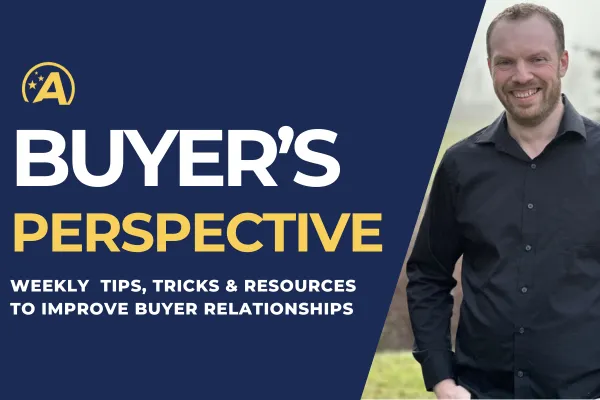
3 Communication Tips for Buyer Meetings: Build Trust and Sell Smarter
Welcome to the Buyer's Perspective blog! If you’ve ever walked out of a buyer meeting thinking, “That could’ve gone better,” this post is for you. Communication in meetings has a huge influence on your ability to sell smarter and build lasting relationships. Here, we’re sharing three tactical tips to help you communicate effectively and leave meetings with momentum.
1. Create an Agenda that Includes the Buyer's Input
💡 Buyers have a million things on their plate—the fastest way to lose them is to make the meeting all about you. Incorporate their needs into the agenda for a more productive discussion.
How to Execute:
Open the meeting by sharing your agenda.
Ask if there are additional topics the buyer needs to address.
Pause, listen, and respond to their input.
Chances are, their concerns are already on your agenda. If not, adjust accordingly—and address their topics first to show you value their priorities.
Why It’s Important:
This approach immediately shifts the focus to solving the buyer’s problems rather than pushing your product. When the meeting is about them, they’re more engaged—and that’s how trust is built.
Pro Tip:
Keep a list of common pain points buyers deal with—like profit margins, competition, or shelf space—so you can pivot quickly and provide relevant solutions.
2. Stick to One Key Idea at a Time
🎯 Trying to pack every product detail into one sentence is a common mistake. When you overload buyers with too much information, they check out fast. Instead, focus on breaking your discussion into key points.
How to Execute:
Present one idea at a time and ask for feedback before moving on.
Examples:
“This brand is Regenerative Organic Certified and a B Corp. How does this align with your category goals?”
“This brand meets your launch requirements but wants to add an additional promo. Which month would you prefer?”
Why It’s Important:
This keeps the buyer engaged and gives them space to ask questions, making it more likely they’ll buy into your product.
Pro Tip:
Prepare a simple 2-3 point outline before the meeting to stay on track. Practice delivering it with co-workers or friends to ensure clarity and confidence.
3. Read the Room and Adjust on the Fly
🙎🏼♂️ Words aren’t everything. A buyer’s body language, tone, and expressions often tell you more than what they say aloud. If they seem bored, distracted, or rushed, it’s time to adapt.
How to Execute:
Re-engage with specific questions:
“How does this compare to other products you’ve seen?”
“Is there anything specific you think is missing?”
“What would make this product a perfect fit for your category?”
Always have a short version of your pitch ready in case time is tight.
Why It’s Important:
Noticing and responding to a buyer’s energy shows you’re paying attention and respect their time. This builds trust—and buyers trust people who adapt to their needs.
Pro Tip:
Prepare two versions of your pitch: one detailed and one concise. If the buyer appears pressed for time, switch to the short version to respect their schedule while delivering your key points.
Final Thoughts
Effective communication in buyer meetings isn’t just about presenting your product—it’s about creating a conversation that builds trust and solves problems. By focusing on the buyer’s needs, delivering clear messages, and staying adaptable, you can leave a lasting impression.
Have your own tips or questions about buyer meetings? Drop a comment or reach out—we’d love to hear from you!